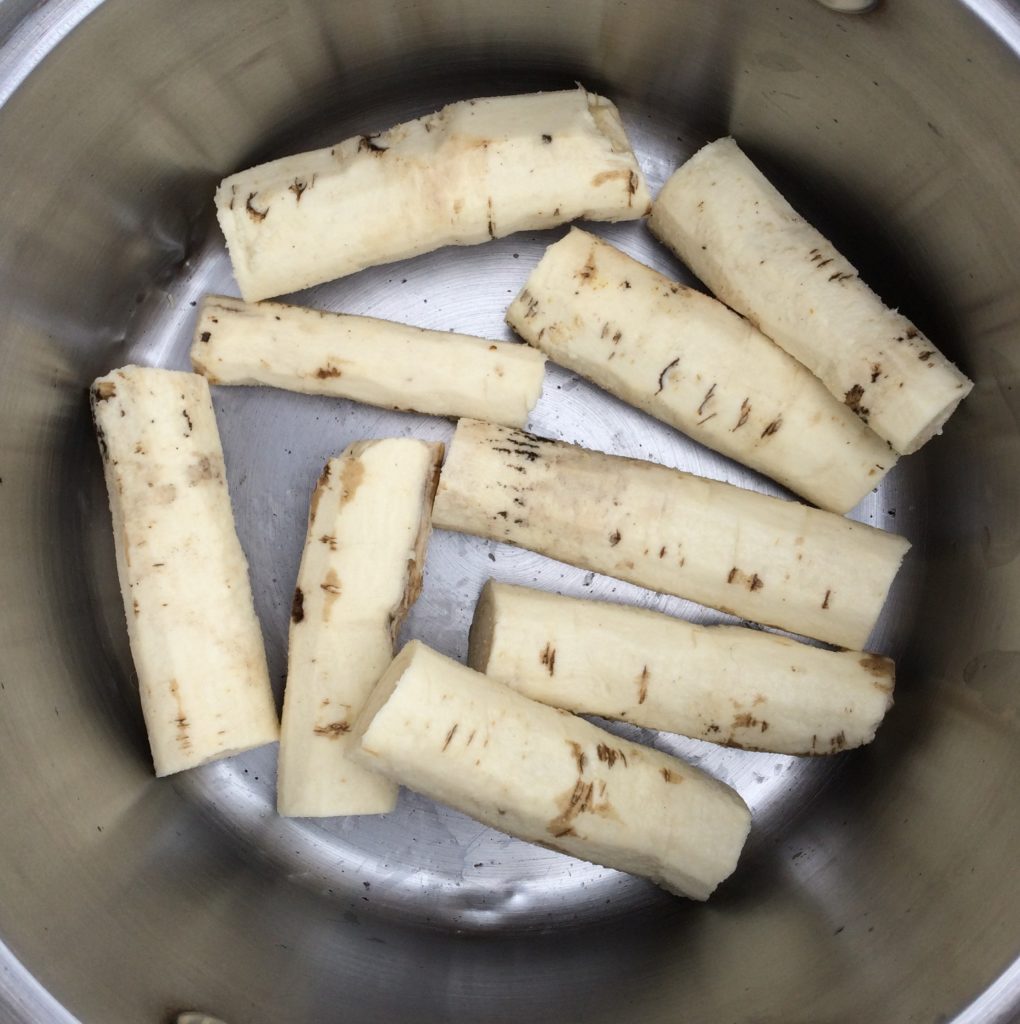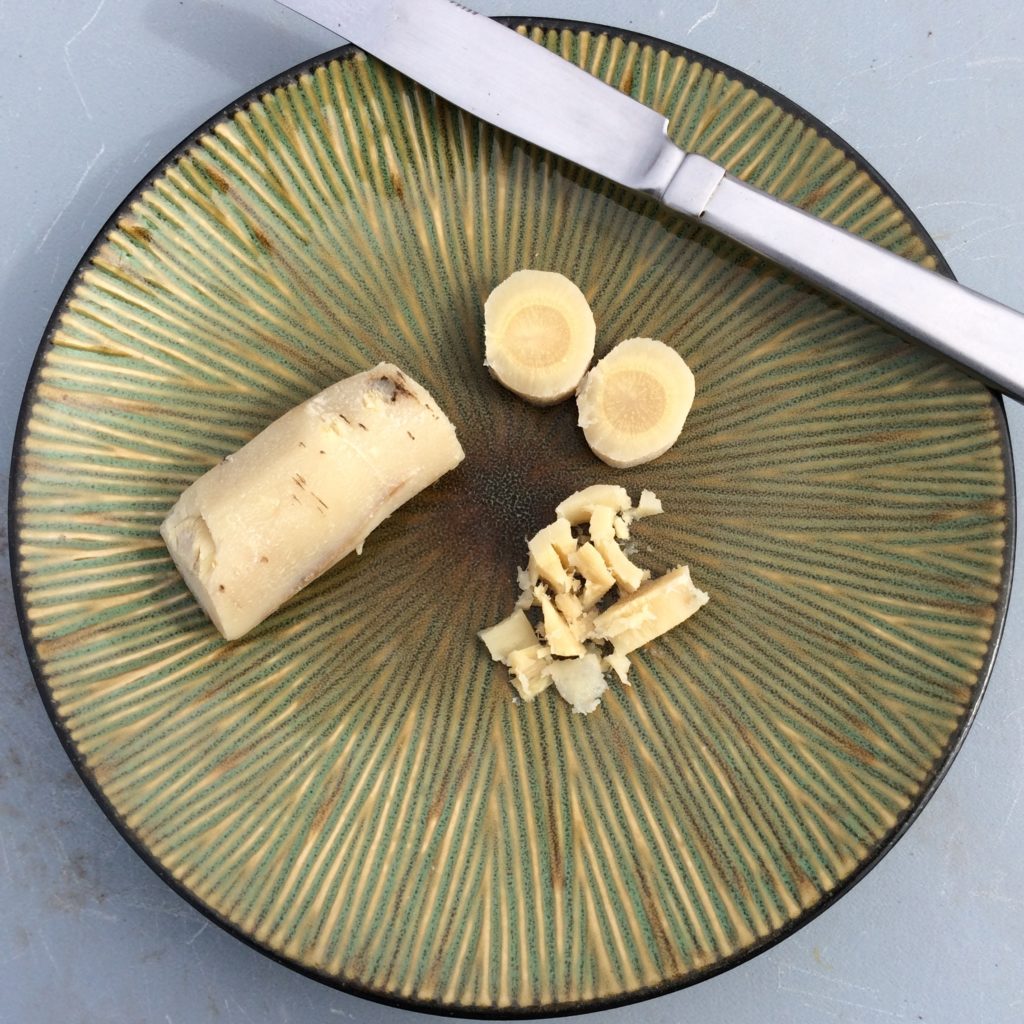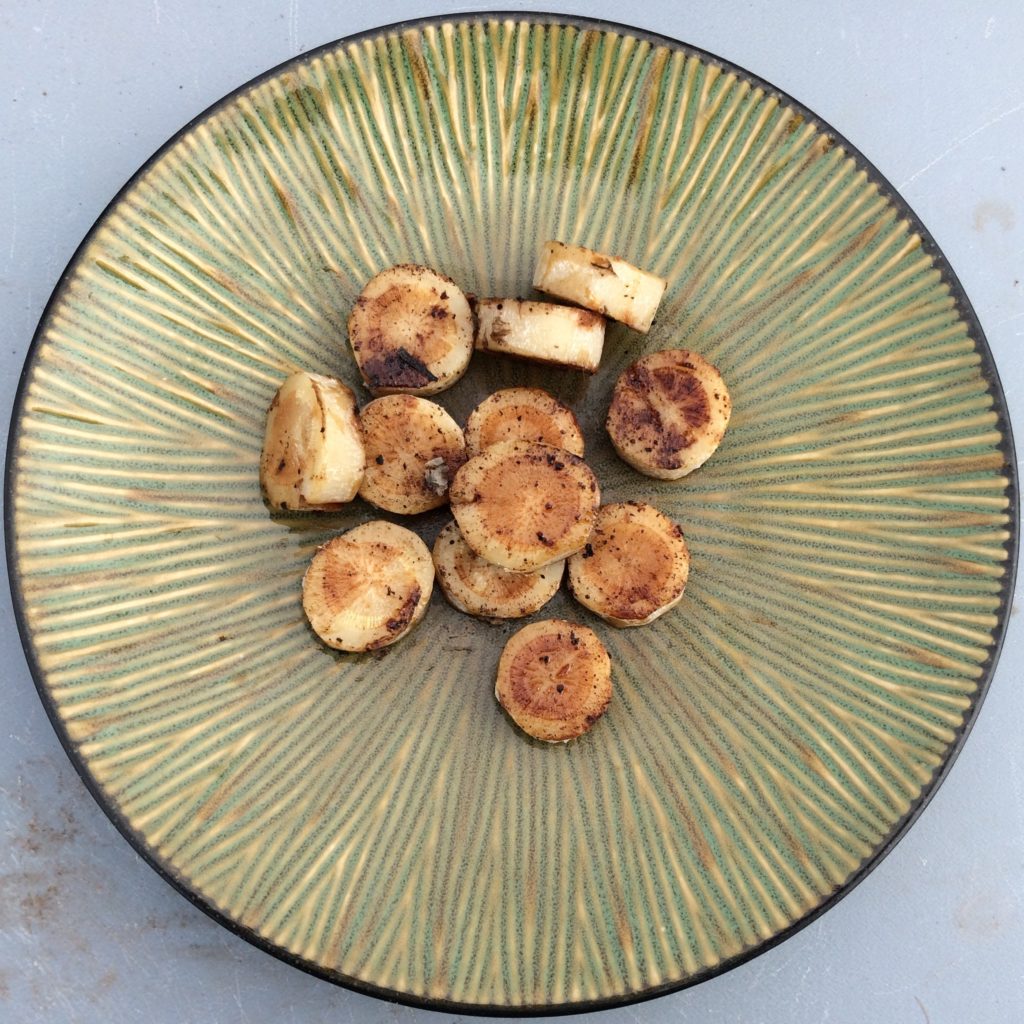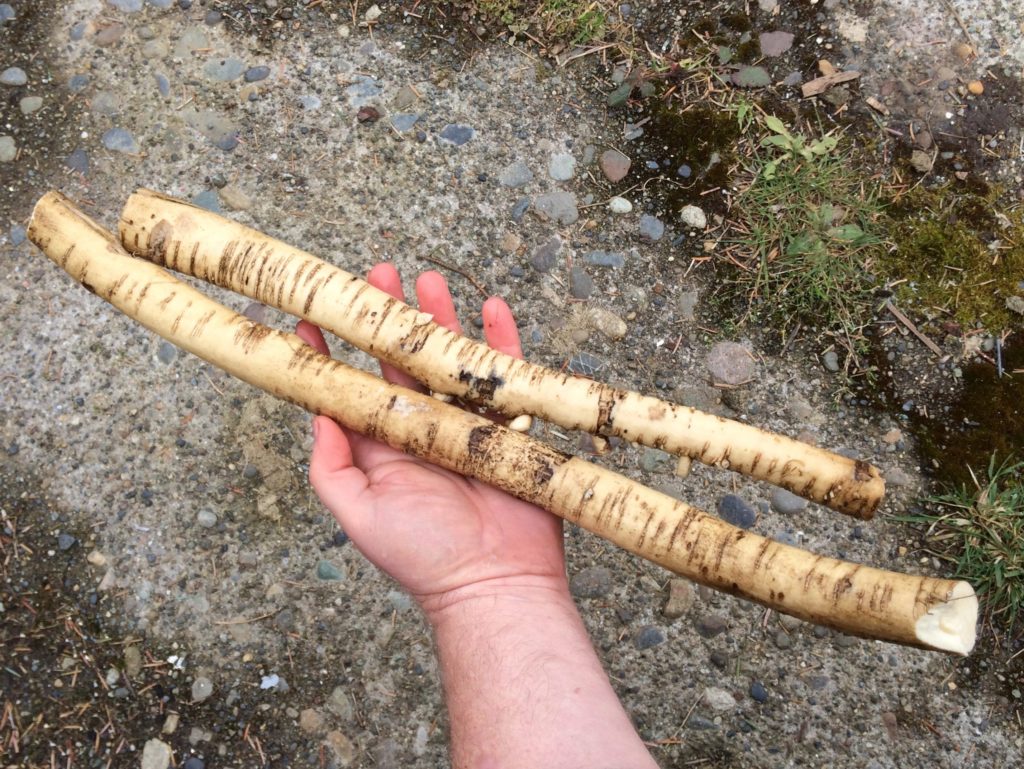Blog, sea kale (Crambe maritima)
Sea Kale: As a Root Vegetable

I get a lot of questions about how to harvest and use sea kale as a root vegetable. Sea kale is more commonly grown for its spring shoots, but all parts of the plant are edible, including the roots. Plants that are two years old or more can produce very large roots that represent a useful perennial food source that can be harvested on demand at any time of year.
The main challenge to eating sea kale roots is harvesting them. The roots can be very long, cover a surprisingly large area, and break easily, so getting at them can be some work. I grow sea kale in raised beds and this makes harvest much easier. At the end of the season, I take off one side and dig out the roots. A bed about 18 inches tall will do the job, although 24 inches is even better.
A lot of people are skeptical that it is worth bothering with sea kale roots, particularly given the somewhat difficult harvest. I think that sea kale is a surprisingly good root vegetable, but it’s not for everyone. Whether or not you will want to go to the effort of digging it will depend a great deal on how much you like the flavor of cabbage. Sea kale root smells and tastes very strongly of cabbage. If you can’t get enough cabbage, broccoli, Brussels sprouts, or other strongly flavored cole crops, you will probably like sea kale root. If you tend to favor only the least pungent sorts of Brassicas, then it is probably not going to be your favorite vegetable.
The root is pretty dense and slightly fibrous. It is not fibrous to the extent that it is stringy, but just enough that you can tell that there is more than one texture when you chew it. I don’t find the texture unpleasant at all.
 |
 |
 |
If you have sea kale roots, your next question will probably be about how to cook them. This is dangerous territory for me, because I’m not much of a cook and also not much of a food photographer. If you want advice about growing or breeding plants, I’m your guy. When it comes to cooking them, let’s just say that I stick to the basics.
I cook sea kale by peeling the roots and boiling for about 40 minutes. After boiling, the roots should be tender enough to mash with a fork. They are still pretty firm compared to a carrot or a turnip, but soft enough to chew easily. After boiling, they are ready to eat. It doesn’t get any simpler than that. For a bit more flavor, it is nice to cut up the boiled roots and fry them lightly in a little olive oil, butter, or lard as you prefer. The roots also roast nicely with meat, as do most root vegetables.
I’m sure that there are more delicious ways to cook sea kale root. If you know if one, leave a comment and tell us about it. And if you want to grow sea kale this year, we still have seeds in stock.


Very interresting!
Would like to test in someday.
May we use your picture of sea cale root on our homepage kunskapskokboken.se?
We marke you as photografer and link to your homepage.
Krister